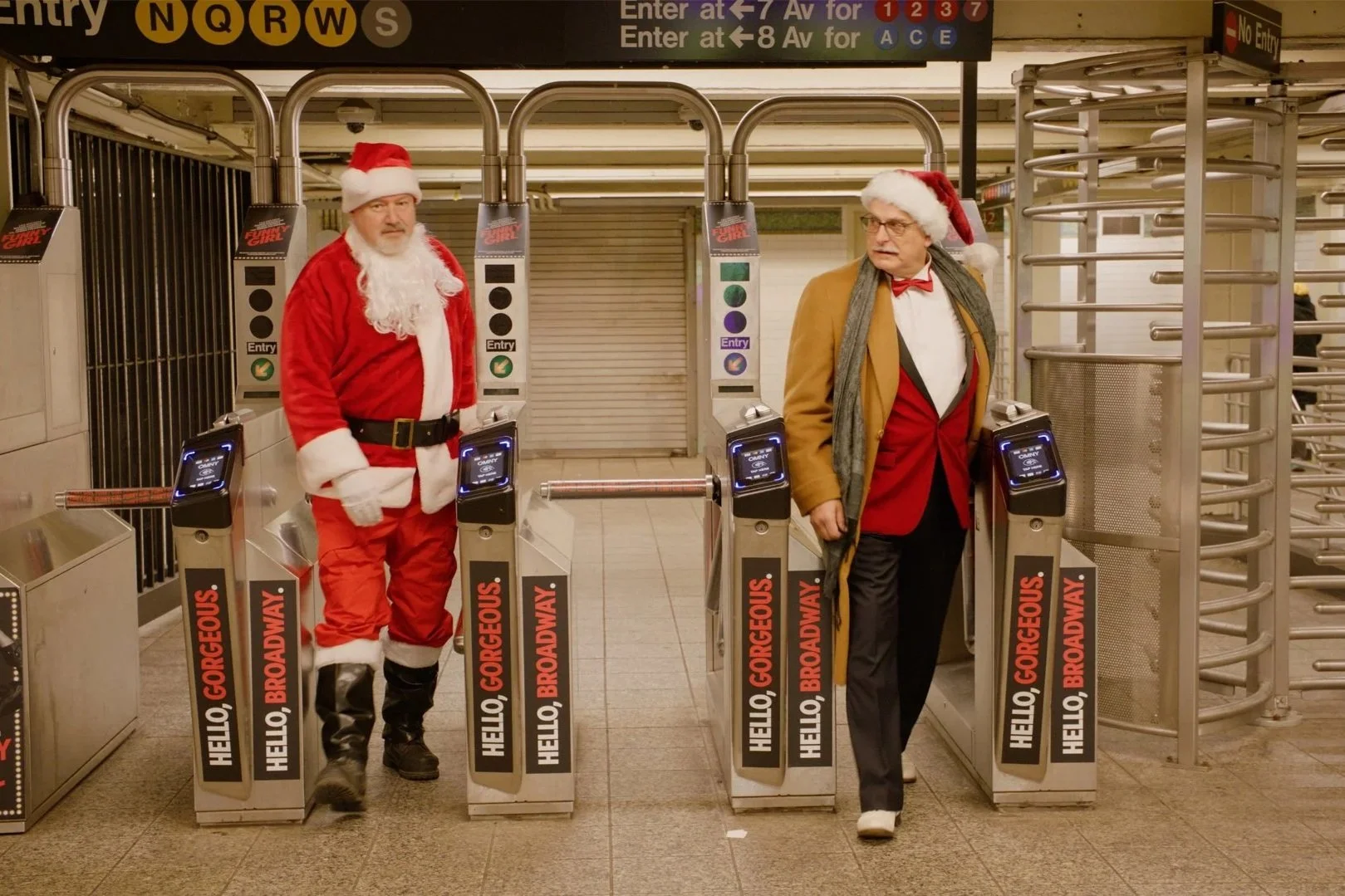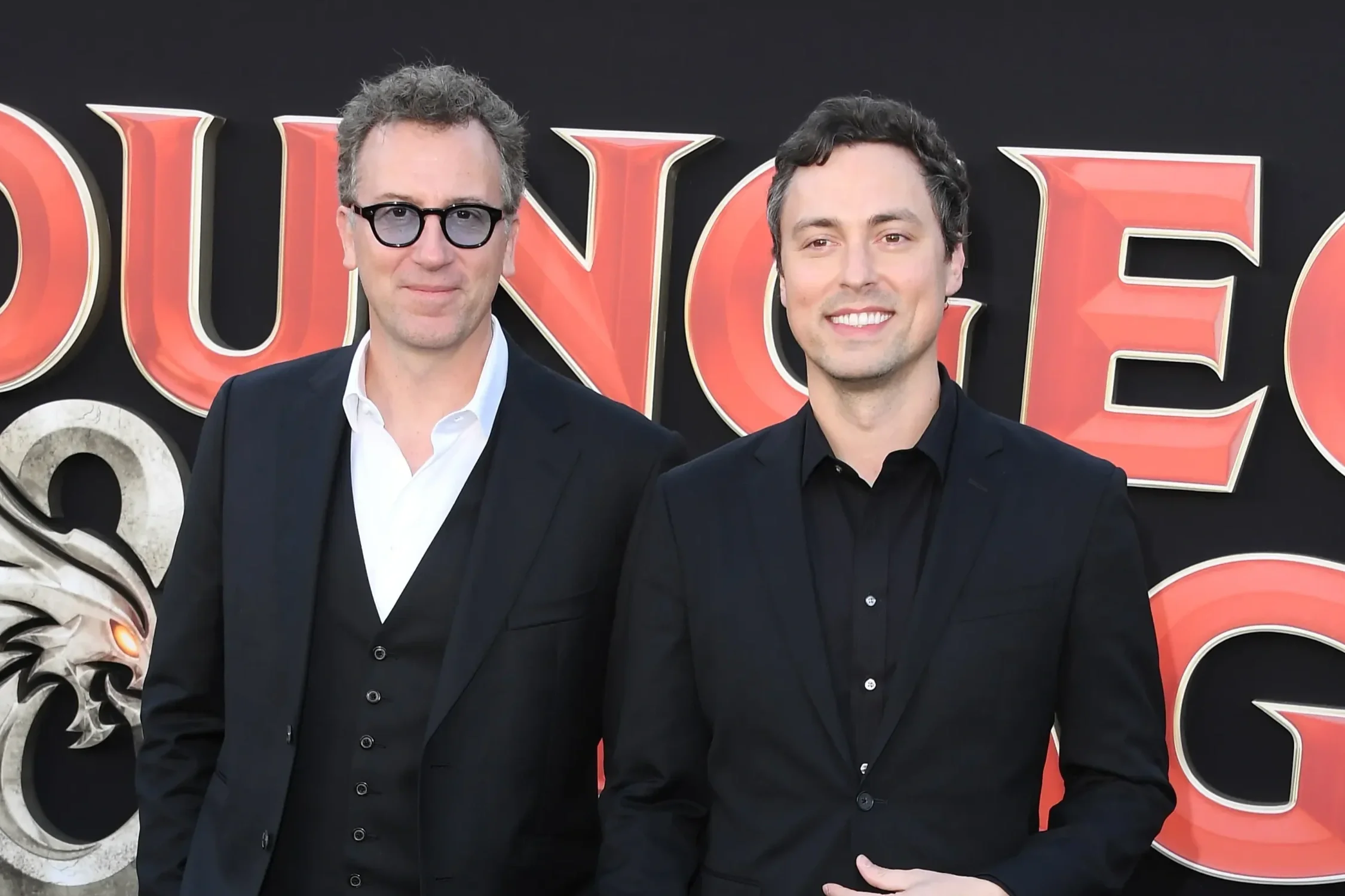‘Santacon’ Reveals the Power of Unapologetic Fun With a Stern Focus on Connection Within Chaos
Written by Nik Mohan
Courtesy of Pinball Party Productions.
Christmas is the “most wonderful time of the year” for many… and yet, there is one coinciding event many people dread: SantaCon.
Every December in New York, just as the holiday season reaches its cozy, well-behaved peak, something far stranger slips into the streets: Santacon. What began as a small, anarchic prank by a handful of artists and mischief-makers has exploded into a global ritual of costumed chaos — part street theater, part pub crawl, part communal rebellion. It’s a day when thousands of people pull on red suits, tumble out of the expected rhythms of city life, and momentarily rewrite the rules.
This is ‘Santacon.’
Best known for co-directing the feature documentary ‘Class Action Park’ (2020) — a deep dive into the wild ride-park culture of New Jersey — filmmaker Seth Porges has shown an appetite for exploring subcultures, risk, spectacle and the underside of “fun gone wild.” He is also the son of neuroscientist Stephen W. Porges, the creator of the Polyvagal Theory. In recent years, Seth has publicly engaged with his father’s work, co-authoring (or contributing to) book and webinar projects around how the nervous system, perceived safety, social connection and regulation work.
This background matters: Porges isn’t solely presenting a novelty story of drunk Santas in the streets, but rather dissecting a phenomenon that implicates ritual, rebellion, affect and the sensory/physiological dimension of group behaviour. Perhaps with this knowledge, the polyvagal frame (which emphasises how nervous systems move through states of safety, fight/flight, freeze etc. in relation to social context) looms quietly in the background of ‘Santacon’’s thematic concerns, even if not named overtly.
‘Santacon’ traces the origin of the event of the same name; beginning with its anarchic roots in the early-to-mid 1990s in San Francisco via the Cacophony Society (the same prank-art collective associated with early incarnations of Burning Man and influenced ‘Fight Club’). The film uses real archival footage, interviews with founders Rob Schmitt and John Law (among others) and modern footage of the event’s evolution into a global phenomenon of costumed Santas swarming city streets in pub-crawl mode.
From a playful, absurdist stunts (dressed as Santas storming malls, bridges, intersections, fancy dinners) to large-scale, often-criticised spectacle of excess, what emerges is a story of transformation and loss of control: the original intention to create, to surprise, and to even voice concerns against rising consumerism, and how it gave way to mass participation, media-vilification and public backlash.
Porges shows the “chaos” of SantaCon is less about random drunkenness and more about people refusing to wait for permission — they simply did exactly what they wanted. They took over the city, dressed up, disrupted normalcy, created delight and confusion, and did not wait for approval or validation. That impulse, of jumping out of routine, of generating collective mischief, of refusing to bow to a conventional calendar-holiday mode, is what gives the documentary its emotional thrust.
The film suggests that the participants of SantaCon positioned themselves in a state of heightened social engagement: dressed alike, moving en masse, invading public spaces, using humour and spectacle as a bridge into communal identity. The sensory overload (bells, costumes, street takeover) triggers an activated nervous system — not necessarily in the fight/flight sense, but in a “we’re alive, we’re together, we’re making this” sense.
By contrast, the critics of SantaCon often see only disinhibition, public nuisance and a loss of normative boundaries. But Porges invites the viewer to see the earlier version of SantaCon as an expression of the human need to feel connected, creative, visible, and safe together… before the event was captured by branding, media-scorn and regulation.
In other words: the chaos is interesting because it was people just doing exactly what they wanted, not waiting for the world to accept them, and creating their own moment. The early Santas weren’t organizing for social acceptance or institutional backing; they were acting for the sheer joy and absurdity of it.
Porges’ archival approach gives the viewer a textured sense of how SantaCon began; with the raw footage of Santas climbing the Brooklyn Bridge, bursting into Christmas carols in public, wobbling through into malls, or sprinting through Venice Beach as if they were storming Normandy — it’s all vivid and alive.
The thematic threading of rebellion, ritual, and crowd behaviour works. The The film doesn’t condemn anything, but offers a reflection on how things mutate once they are popular, and a neutral perspective: we see it as it is, letting the audience be the ones to come to their own conclusion on if SantaCon was chaotic, harmless fun, or a ridiculous, nonsensical waste of time.
Because of Porges’ prior work and his journalistic background, he brings a curious, somewhat detached yet affectionate eye; he doesn’t glorify everything, but he keeps the wonder of the original impulse alive.
One might argue the film doesn’t fully reckon with the consequences of the event’s later forms; when SantaCon became large, commercially oriented and sometimes unruly. The documentary flirts with nostalgia for a “better” version of the event, and viewers may feel the critique of the modern incarnation is only lightly performed.
Though it’s appreciative for Porges to offer a neutral view into the spectacle and emotional arc of creation and popularism, it sometimes sacrifices deeper sociological or psychological analysis (for example: what exactly drives the participants, how socio-economic context matters) in favour of narrative momentum. Maybe this was answered simply because some of those participating Santas felt betrayed by the fact that Santa Claus is indeed, not real.
If you approach the film expecting a rigorous critique of the event’s current form (as a public nuisance, drunk-crawl, etc), you might feel the documentary is more celebratory of the original chaos than condemnatory of the later consequences.
‘Santacon’ is a meditation on how play, rebellion and communal energy coalesce into ritual, how meaning can emerge from absurdity, and how movements shift when they scale. In the hands of Seth Porges, with his combined interest in risk-culture and his connection to the nervous-system/connection themes via Polyvagal interest, the film becomes layered: yes it is fun, yes it is chaotic, but it’s also telling.
At it’s core, the documentary tells us when people stop asking for permission and just do what they want — even if that doing is silly, strange or subversive — something genuine can happen. Even if the world later questions it, even if the event becomes something the originators don’t recognize, the original spark mattered.
If you’re open to a documentary that uses Santa suits and street swarms as its vehicle, but underneath probes the human need for connection, surprise and doing your own thing without waiting for validation, ‘Santacon’ is worth your time. The doc is an electric thrill of stepping outside normalcy, of playing loudly in public, of being part of a community that refuses to wait for permission to exist.
Our score: ★★★★☆
(out of 5 stars)
‘Santacon’ premiered at DOC NYC on November 13.






